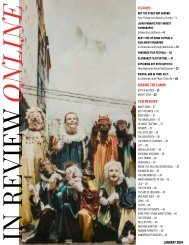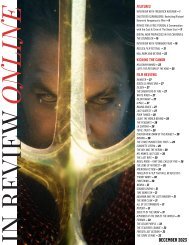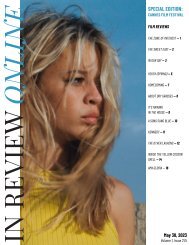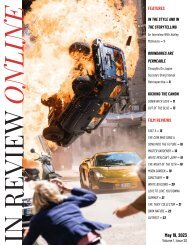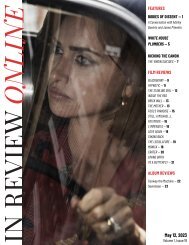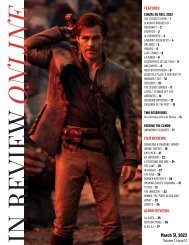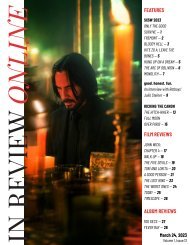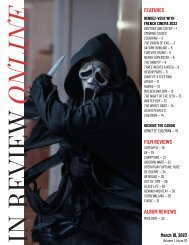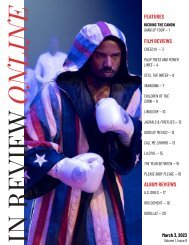InRO Weekly — Volume 1, Issue 16
Create successful ePaper yourself
Turn your PDF publications into a flip-book with our unique Google optimized e-Paper software.
KICKING THE CANON<br />
YOUTH OF THE BEAST<br />
Seun Suzuki<br />
Seijun Suzuki made his name with a string of Nikkatsu-produced genre flicks <strong>—</strong> The Naked Woman and the Gun (1957), Voice Without a<br />
Shadow (1958), Man With a Shotgun (1961) <strong>—</strong> but is probably best known to contemporary audiences for his yakuza films. A relatively<br />
inhibited take on American gangster noirs quickly evolved into a kaleidoscopic assault on the form that made him both beloved and<br />
infamous, with what’s now his most acclaimed work <strong>—</strong> 1967's eclectic, satirical yakuza classic Branded to Kill <strong>—</strong> initially landing as a<br />
critical and commercial failure, and leading to Suzuki's dismissal by Nikkatsu, for making "movies that make no sense and no money,"<br />
according to the filmmaker. This then led Suzuki to successfully sue the production company, but the ordeal cost him a decade-long<br />
blacklisting.<br />
Though Suzuki’s freewheeling cinematic sensibilities can actually be traced all the way back to his debut film, 1956's Victory is Ours,<br />
the first genuine flashes of his trademark style appeared in the 1958 crime film Underworld Beauty. Not only was this the first of his<br />
films credited to Seijun Suzuki (as opposed to Seitaro Suzuki, his birth name), but it also featured an unorthodox visual creativity <strong>—</strong><br />
cleverly obscured nudity; deep, mysterious shadows; creepy mannequin set design <strong>—</strong> which was nevertheless noticeably restrained<br />
by Nikkatsu's expectations of commercial viability. Take Aim at the Police Van (1960) and Detective Bureau 23: Go to Hell, Bastards!<br />
(1963) can be similarly described. But then came Youth of the Beast, which marked a true turning point for the filmmaker.<br />
One of four Suzuki films released in 1963, Youth of the Beast saw the auteur truly embrace his playful pop artistry for the<br />
first time <strong>—</strong> even Suzuki himself called it his "first truly original film." The plot is essentially a spin on Kurosawa's<br />
1961 samurai film Yojimbo, wherein a wandering ronin, Kuwabatake Sanjuro (Toshiro Mifune), infiltrates the<br />
organizations of two opposing crime bosses struggling for supremacy<br />
to bring peace to a small village. But unlike<br />
9




